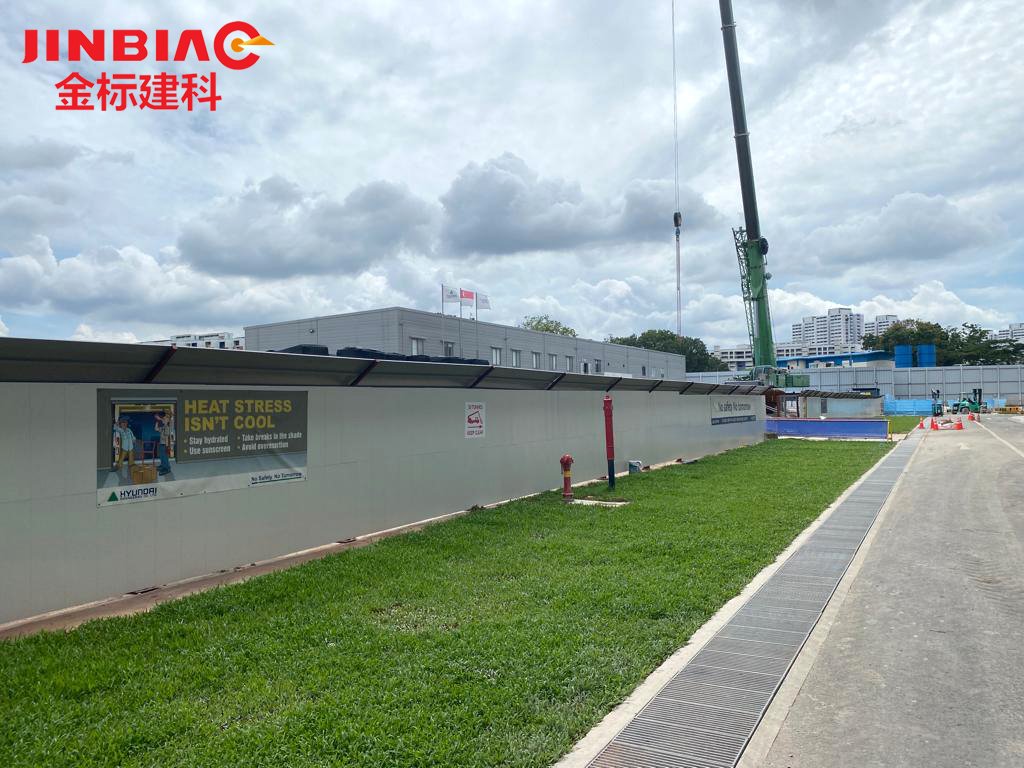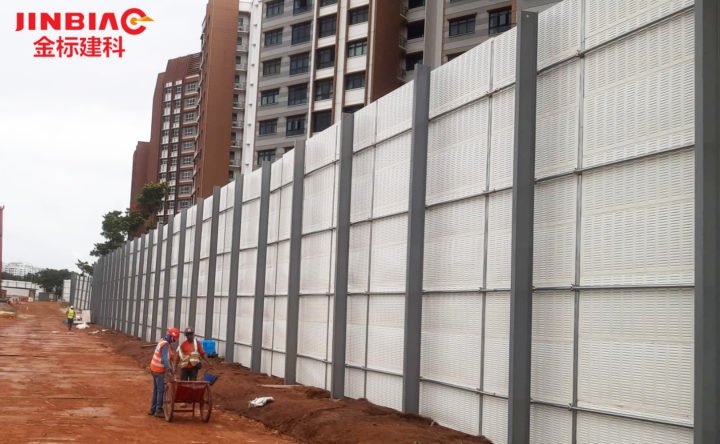
Experiencing peace and quiet in the comfort of our homes or the productivity of our workspaces is a luxury that noise pollution constantly threatens. With the rise in urbanisation and an increasing number of dwellers, the need for effective noise control measures is more pressing than ever. An essential component in the soundproofing toolkit is the use of noise barrier sheets.
If you’re a homeowner looking to soundproof a room, a DIY enthusiast attempting to block out your noisy neighbours, or an acoustic engineer seeking the latest materials for a project, understanding the fundamentals of these sound-dampening sheets is crucial.
Understanding Noise Control and Soundproofing
Noise control is the process of reducing or eliminating unwanted sounds from our surroundings, while soundproofing involves creating a barrier that prevents sound from entering or leaving a space. These two concepts go hand in hand and are vital for creating a comfortable, peaceful environment.
How Noise Barrier Sheets Work
A noise barrier sheet works by reducing the transmission of sound waves through walls, ceilings, or floors. They are made from dense materials with high mass and thickness, such as rubber, vinyl, or polyurethane foam.
When sound waves hit these materials, they are absorbed and reflected, reducing the overall noise level in a space. This makes noise barrier sheets an effective solution for blocking out unwanted noise from outside sources, as well as containing or isolating sound within a specific area.
There are various types of noise barrier sheets available on the market, each with its own unique properties and benefits.
1. Mass Loaded Vinyl (MLV)
Understanding Mass Loaded Vinyl
Mass Loaded Vinyl (MLV) has gained popularity as an effective and versatile noise barrier. This dense, rubber-like material packs a heavy punch against airborne and impact noises thanks to its ability to reduce sound transmission and dampen vibrations.
The Benefits and Limitations
Pros:
- MLV is flexible and thin, making it relatively easy to install in most spaces without significant renovations.
- It can be cut into various shapes and sizes, allowing for custom fitting to the desired area.
- This material has high mass, which is essential for absorbing and reflecting sound waves effectively.
Cons:
- It is not a complete solution and works best in conjunction with other soundproofing materials.
- While installation might be manageable for a DIYer, it’s a dense material that can be challenging to handle.
- MLV sheets can be quite heavy, which may be a concern for walls or ceilings not structurally designed to carry extra weight.
Installing MLV Sheets
To maximise the effectiveness of MLV sheets, proper installation is key:
Preparation:
- Measure the area and cut MLV sheets to size, leaving a small gap for installation ease.
- Ensure the surface is clean and dry before applying the MLV adhesive.
Application:
- Apply the MLV to the surfaces, using a roller to press out any air bubbles.
- Overlap seams by one inch to reinforce soundproofing integrity.
Finishing:
- Seal the edges with acoustic caulk to prevent sound leaks.
- Consider a second layer for enhanced noise control, especially in high-noise environments.
2. Acoustic Foam Panels
An Overview of Acoustic Foam Panels
Acoustic foam panels are a popular choice for absorbing and diffusing sound within a room, making them a great complementary material in soundproofing efforts. They are designed to reduce echo and reverberation, which can contribute to noise buildup in spaces.
Different Types and Their Uses
Closed-Cell Foam:
- Offers better sound blocking as it is denser and more rigid.
- Ideal for use in conjunction with MLV for complete noise control solutions.
Open-Cell Foam:
- More porous and soft, optimised for sound absorption rather than sound blocking.
- Commonly used in recording studios and home theatres to improve sound quality.
Placement and Installation
Placement:
- Position acoustic foam panels strategically to target reflective surfaces.
- Use as needed to address specific noise issues in different areas of the room.
Installation:
- Adhere to surfaces with a suitable adhesive, ensuring full contact for optimal performance.
- Experiment with different panel orientations to find the most effective sound-absorbing configuration.
3. Soundproof Paint
What is Soundproof Paint and How Does it Work?
Soundproof paint, or acoustic paint, is a relatively new player in the soundproofing industry. It’s formulated with special materials that add mass to the wall surface or are engineered to create a noise barrier within the paint itself.
Working Mechanism:
- These paint compounds are designed to increase the density of the wall or ceiling, reducing the passage of sound through it.
- Some paints include sound-dampening properties that convert sound energy into trace amounts of heat, which is then dissipated.
Applying Soundproof Paint
Preparation:
- Like any painting job, the surface should be clean and dry.
- Some acoustic paints require a primer or specific surface treatment before application for best results.
Application:
- Apply the first coat, allowing it to dry completely before applying additional coats for the desired thickness.
- Consider applying the paint with a sprayer for an even layer and consistent acoustic performance.
Limitations and Best Practices
Limitations:
- Soundproof paint is not a standalone solution and is best used in combination with other soundproofing materials like MLV or foam panels.
- The effectiveness of soundproof paint can be limited if the noise source is vibration-related, as it does not dampen impact noise well.
Best Practices:
- Include soundproof paint as part of a comprehensive acoustic treatment plan.
- Understand the coverage limitations of the paint you choose and apply multiple coats if necessary.
4. Fiberglass Insulation
Harnessing the Power of Fiberglass
Fiberglass insulation is not just for temperature control; it’s a surprisingly effective soundproofing material as well. It works by trapping sound waves within its fluffy fibres and converting the acoustic energy into heat.
Benefits of a Noise Barrier
Pros:
- Fiberglass insulation can significantly reduce the intensity of both airborne and impact noises.
- It’s a cost-effective solution compared to some other soundproofing materials.
- Fiberglass is moisture-resistant and non-corrosive, making it a durable option.
Installing Fiberglass Insulation for Soundproofing
Precautions:
- Wear appropriate protective gear, including a mask and gloves, during installation due to potential skin and respiratory irritants.
Installation:
- Place the insulation in wall or ceiling cavities, ensuring it reaches every corner without compressing it.
- Use a vapour barrier over the insulation to enhance soundproofing further and protect against moisture.
Finishing Touches:
- Seal any gaps or penetrations in the insulation with acoustic caulk to prevent sound leaks.
- Consider covering the insulated wall or ceiling with a sound-dampening material such as drywall or wood panelling.
5. Best Practices for Comprehensive Noise Control
The Layered Approach
The best way to achieve effective noise control is through a layered approach. No single material can provide complete soundproofing, but a combination of different products offers a comprehensive solution.
Speaker Enclosures and Barriers:
- For home theatres or music rooms, construct enclosures for speakers and instruments to contain sound.
- Use barriers around noisy equipment to reduce the transmission of sound waves.
Manage Structural Vibrations:
- Install vibration isolators on sound-producing machinery to prevent the transmission of vibrations through floors and walls.
- Address structural weaknesses in walls, floors, and ceilings that can act as sounding boards for noise transmission.
Sealing and Cushioning:
- Seal doors and windows with weather stripping to prevent sound leaks.
- Use cushioned door thresholds to minimise sound passage.
Consider Professional Consultation:
Engaging with an acoustic consultant can provide tailored advice and a professional assessment of your space’s soundproofing needs. They can recommend the best materials and layout for your specific situation.
Conclusion
A serene and peaceful environment is a true luxury in our bustling modern world. A noise barrier sheet is essential for achieving this tranquillity in our homes, workplaces, or recreational spaces. By understanding the options available and the best practices for their use, we can take control of the sounds that enter and leave our sanctuaries.
Remember, achieving effective noise control in any space is a multi-step process that often requires the use of multiple techniques and materials. As you learn and practice soundproofing, you’ll find that the journey to quiet living can be just as rewarding as the destination.
Hebei Jinbiao is a leading company in Noise Barrier products and Fencing products in Singapore. We guarantee to provide you with the most high-quality Sound Barrier and Fencing products along with our dedicated assistance. Do not hesitate to contact us. We are looking forward to helping you solve your noise issues, safety issues and protecting you from noise pollution as well as ensuring your safety.

